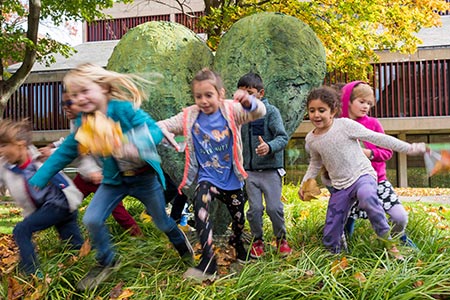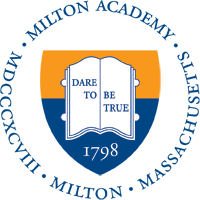Kindergarten
The Kindergarten year is designed to support children’s developing sense of self in relation to a new community. DEIJ and Social Studies activities often provide students with opportunities to explore and express their identities and learn about the identities of their classmates and teachers. Through daily routines and community times, we guide students to co-create an effective, supportive learning community.
Kindergarteners are learning “how to do school” at the same time that they are learning important content in the academic subjects. Often, Kindergarteners are doing both at the same time. For instance, there is so much mathematics involved in discussing the calendar during community meetings, and there is so much powerful community-building that happens as students learn how to build on one another’s thinking during academic classes. Thanks to our small class sizes, we can provide individualized learning experiences for each of our students; this is especially true during our phonics and reading classes, where we use research-based, scientific approaches to support each child on their individual reading journey. Kindergarten is also an especially important time for a school to affirm for children what they already know: that play is an essential form of children’s work.

Math
- Content
- Categorizing and sorting as mathematical acts
- Strategies for effective, accurate counting
- Measurement as a key “big idea” in mathematics
- Describing 2D and 3D geometric shapes mathematically
- A beginning understanding of the structures of our Base 10 number system
- Addition and subtraction: early strategies, models, and related big ideas
- Modeling with data
- K–5 Math Practices
- Make sense of problems and persevere in solving them.
- Reason abstractly and quantitatively.
- Construct viable arguments and critique the reasoning of others.
- Model with mathematics.
- Use appropriate tools strategically.
- Attend to precision.
- Look for and make use of structure.
- Look for and express regularity in repeated reasoning.
Reading
- Phonics
- Letter-sound associations
- Phonemic awareness
- Word decoding (reading) and word encoding (spelling)
- Acquisition of “sight words” (words recognizable and readable on sight)
- Shared reading (collaborative reading with a teacher)
- Print awareness: understanding how letters, sounds, and words work together in printed texts
- Language awareness: understanding the differences between spoken language and the language of literature
- Language awareness: understanding how syntax organizes meaning and shapes oral reading
- Story awareness: understanding common story elements, story structures, and narrative conventions
- Word-recognition skills, word-analysis skills, and word-solving strategies
- Expanding vocabulary
- Developing personal and critical responses to texts
Writing
- How to work in a writer’s workshop
- How to write true stories for an audience
- Writing “how-to books”: writing in order to teach others
- “Small moment” narrative writing: telling focused narratives that unfold with detail in a short span of time
Diversity, Equity, Inclusion, & Justice (DEIJ)
- Anti-bias: creating a safe and comfortable classroom environment; understanding my strengths, skills, and identity; understanding and appreciating differences; understanding bias and discrimination; challenging and confronting bias
- Racial literacy: a celebration of skin colors
- Social justice: Who are the activists in my community? Art and activism.
